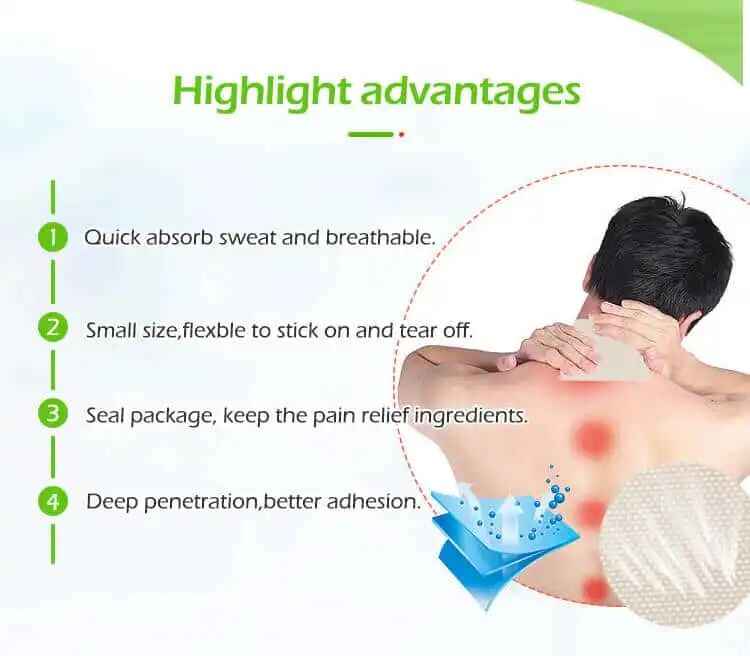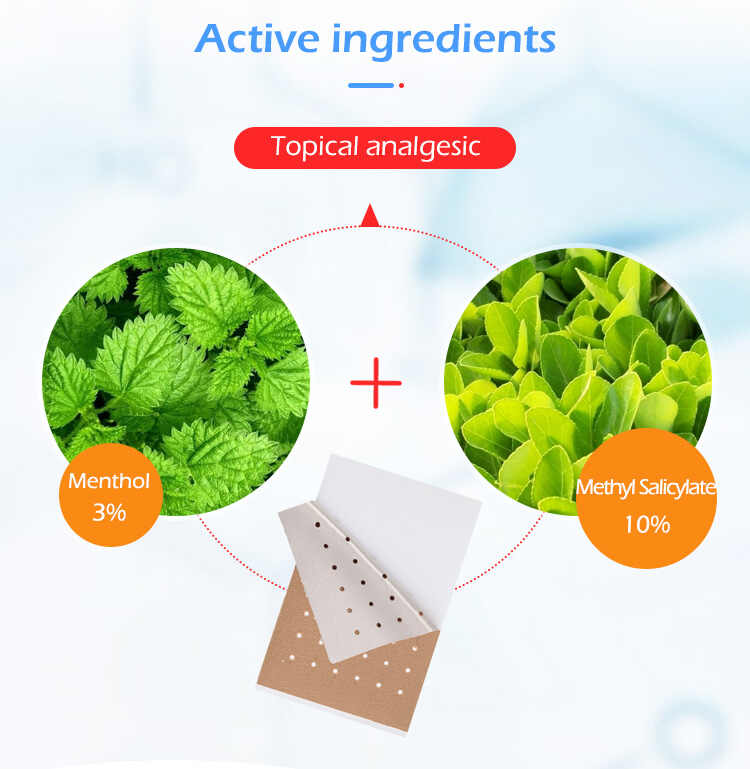Key Quality Control Factors in Heat Therapy Patch OEM Production
The heat therapy patch market has witnessed tremendous growth in recent years due to the increasing demand for non-invasive pain relief solutions. Businesses venturing into this market must ensure that the products they offer are of the highest quality to stand out in a competitive space. Partnering with a reliable Heat Therapy Patch OEM (Original Equipment Manufacturer) is crucial to ensuring that the production process meets industry standards and delivers a safe and effective product.
Quality control is one of the most vital aspects of manufacturing heat therapy patches. It ensures that every patch produced meets the necessary safety, comfort, and performance criteria. In this comprehensive guide, we will explore the key quality control factors involved in Heat Therapy Patch OEM production and how businesses can leverage them to produce high-quality Custom Heat Therapy Patches or Private Label Heat Therapy Patches.

1. Understanding Quality Control in Heat Therapy Patch Production
Quality Control (QC) refers to the systematic process of ensuring that products meet predefined quality standards. In the case of Heat Therapy Patch Manufacturers, QC ensures that each patch provides consistent heat therapy, adheres to safety guidelines, and is comfortable and effective for the user. A trusted Heat Therapy Patch Supplier will implement rigorous QC practices throughout the production process, from sourcing raw materials to final product testing.
The goal of quality control is to eliminate defects, reduce waste, and enhance the overall product performance. For businesses working with a Heat Therapy Patch OEM, establishing strong quality control protocols is essential to delivering a product that aligns with both customer expectations and regulatory requirements.
2. Key Quality Control Factors in Heat Therapy Patch OEM Production
1. Material Selection and Sourcing
The first step in quality control is ensuring the right materials are sourced for manufacturing. The materials used in Heat Therapy Patches directly impact the patch’s performance, safety, and comfort. Therefore, it is crucial that Heat Therapy Patch Manufacturers select high-quality materials that are safe for prolonged skin contact and provide consistent heat.
Common materials used in Heat Therapy Patches include:
Non-woven fabrics: These are breathable and flexible, allowing the patch to conform to the body.
Adhesives: High-quality adhesives ensure that the patch stays in place without causing irritation or damage to the skin.
Heat-generating compounds: Active ingredients like iron powder or activated carbon are used to produce heat. These must be carefully sourced to ensure long-lasting heat release.
Herbal ingredients: If included, natural ingredients such as menthol or capsaicin must be sourced from reputable suppliers to ensure efficacy and safety.
A reliable Heat Therapy Patch OEM Supplier will have established relationships with trusted material providers and conduct routine checks on material quality.
2. Compliance with Industry Standards and Regulations
Heat therapy patches are considered health and wellness products, meaning they must comply with a variety of regulatory standards and guidelines to ensure consumer safety. Depending on the region in which the patches are sold, Heat Therapy Patch Manufacturers must adhere to different regulations.
For example:
FDA Regulations (for the U.S.): The FDA (Food and Drug Administration) regulates medical devices and over-the-counter health products. Heat therapy patches must be manufactured in accordance with FDA’s Good Manufacturing Practices (GMP).
CE Marking (for Europe): In Europe, heat therapy patches may need to comply with EU medical device regulations and carry the CE mark to indicate they meet safety and quality requirements.
ISO Certifications: Manufacturers should also have ISO 9001 and ISO 13485 certifications, ensuring they meet international quality management standards.
A reputable Heat Therapy Patch OEM will be familiar with the necessary regulations for the target market and will ensure compliance throughout the production process.
3. Product Design and Functionality Testing
Once the materials have been selected and the manufacturing process begins, it is essential to test the Custom Heat Therapy Patch design for functionality. Testing will ensure that the patch delivers the intended performance, such as consistent and effective heat distribution.
Key tests include:
Heat Consistency Testing: The patch should deliver a consistent level of heat over the intended duration. Testing ensures that the heat-producing ingredients activate properly and that the patch remains effective for the duration of its use (typically 8-12 hours).
Comfort Testing: The patch must adhere comfortably to the skin without causing irritation or discomfort. It should also maintain flexibility and not hinder movement.
Skin Sensitivity Testing: Some consumers may have sensitive skin, and it’s important to ensure the patch does not cause allergic reactions or rashes. Heat Therapy Patch Suppliers should conduct dermatological testing to verify the safety of the adhesive and heat-generating components.
By conducting comprehensive functional testing, businesses can ensure their Private Label Heat Therapy Patch or custom-designed patches meet performance expectations.
4. Durability and Safety Testing
In addition to ensuring functionality, heat therapy patches must undergo durability and safety testing to ensure they remain effective and safe during use. Durability testing focuses on the patch's ability to stay intact over time and during normal use, while safety testing ensures the patch will not harm the user.
Key tests include:
Adhesion Strength Testing: Ensures that the adhesive used to attach the patch to the skin will hold without peeling off prematurely.
Leakage Testing: For patches that contain gel or heat-producing elements, it’s crucial to ensure there is no leakage that could potentially harm the user.
Shelf Life Testing: This testing simulates how the patch will perform over time, ensuring it maintains effectiveness and safety up to its expiration date.
A reliable Heat Therapy Patch OEM will carry out these tests to guarantee that each batch of patches is safe and durable.
5. Packaging and Labeling Compliance
The final quality control factor involves ensuring that packaging and labeling meet legal and branding requirements. Clear and accurate labeling is essential for ensuring consumer safety and providing important information about the product.
Key factors to consider:
Regulatory Compliance: Labels must comply with local and international regulations, including listing ingredients, usage instructions, warnings, and disclaimers.
Branding and Aesthetics: Packaging should reflect your brand image while conveying product benefits clearly and effectively. A visually appealing and informative package can help drive consumer interest.
Instructions for Use: Clear instructions on how to apply and use the patch are crucial for customer satisfaction and safety.
A reputable Heat Therapy Patch Supplier will ensure that your product packaging complies with regulatory standards while supporting your brand.
3. Benefits of Robust Quality Control in Heat Therapy Patch OEM Production
Implementing strong quality control measures throughout the Heat Therapy Patch OEM production process offers several benefits:
Consistency: High-quality control ensures that each Custom Heat Therapy Patch performs consistently, building consumer trust.
Safety: Regular testing and adherence to safety standards reduce the risk of harmful products reaching consumers, preventing potential legal and reputational damage.
Brand Loyalty: A commitment to quality builds brand loyalty, as customers are more likely to trust and repurchase from brands that offer reliable, effective products.
Regulatory Compliance: Strict adherence to quality control ensures that the product meets all relevant health and safety regulations, avoiding costly recalls or legal issues.
4. Frequently Asked Questions (FAQs)
1. Why is quality control essential in Heat Therapy Patch OEM production?
Quality control ensures that each heat therapy patch is safe, effective, and performs consistently, meeting both customer expectations and regulatory standards.
2. What testing is required for Custom Heat Therapy Patches?
Essential tests include heat consistency, comfort, skin sensitivity, durability, and safety tests to ensure the patch performs as expected and does not cause harm.
3. How can I ensure my Private Label Heat Therapy Patch meets regulatory standards?
Partner with a Heat Therapy Patch Supplier that is familiar with local and international regulations and can help ensure your product complies with all relevant laws and guidelines.
4. What are the common materials used in Heat Therapy Patch production?
Common materials include non-woven fabric, activated carbon or iron powder for heat generation, and skin-safe adhesives that ensure the patch stays in place.
5. How do Heat Therapy Patch Manufacturers ensure product safety?
Manufacturers conduct a variety of safety tests, including skin sensitivity and leakage testing, and comply with industry standards such as FDA and ISO certifications.
Conclusion
Quality control in Heat Therapy Patch OEM production is vital to ensuring that the final product is safe, effective, and high-performing. By focusing on material selection, compliance with regulations, rigorous testing, and proper packaging, businesses can offer Custom Heat Therapy Patches that stand out in the market. Partnering with a trusted Heat Therapy Patch Manufacturer and Heat Therapy Patch Supplier who prioritizes quality control ensures that your product will meet customer needs and regulatory standards, ultimately boosting your brand’s reputation and success.






